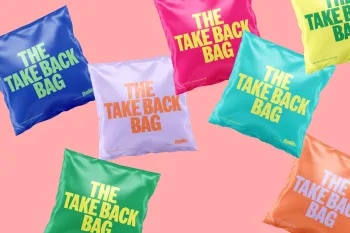A major food wholesaler had to issue a recall after an apparent mishap resulted in tainted products.
What's happening?
CraftMark Bakery recalled thousands of cases of cookie dough and ready-to-eat cookies on March 27 because they were contaminated with plastic, Food Safety News reported.
The issue was discovered during internal quality checks and was likely caused by damaged equipment or packaging, Source86 noted, describing it as "a common risk in high-volume food manufacturing."
The products were oatmeal raisin cookie dough, oatmeal cranberry raisin cookie dough, and individually wrapped Premium Monster Cookies. The cookies made up 6,380 of the 6,589 affected cases. They were sent to California, Illinois, and Maryland as well as Canada.
"Consumers and businesses should not consume, sell or distribute the recalled products and should check their inventories for the affected code information," FSN noted.
Why is this important?
Microplastics are nearly impossible to avoid because of their ubiquitous presence in air, soil, water, wildlife, and more. They have been found almost everywhere on Earth and linked to DNA damage, organ dysfunction, metabolic disorder, immune response, neurotoxicity, and reproductive and developmental toxicity.
Watch now: Danone executive shares how the company leverages 'rescued fruit' to create some of its products
Product contamination is another issue, though these tiny fragments — smaller than 5 millimeters — can be invisible to the naked eye. They come from larger pieces of plastic that don't break down naturally but just degrade into smaller and smaller pieces. Microplastics can also include dangerous chemicals that leach into the environment and invade our bodies.
"The presence of plastic in food products poses risks such as choking, oral injury, or gastrointestinal discomfort if ingested," according to FSN. "Though classified as Class II recalls, indicating a low probability of severe health outcomes, consumers experiencing any adverse effects should seek medical attention promptly."
What's being done about microplastics?
To limit microplastics exposure, you can eat organic food or grow your own. Ditch single-use water bottles for a reusable one, opt for non-plastic food containers (especially when it comes to hot food), and bring your own takeout boxes to restaurants.
And because clothing often sheds microplastics, look for natural fibers when you upgrade your wardrobe. More broadly, can also lower your meat intake, replace nonstick cookware, and use natural cleaners to reduce harmful chemical exposure, as one expert detailed.
TCD Picks » Quince Spotlight

|
Do you worry about how much food you throw away? Click your choice to see results and speak your mind. |
Join our free newsletter for easy tips to save more and waste less, and don't miss this cool list of easy ways to help yourself while helping the planet.
















